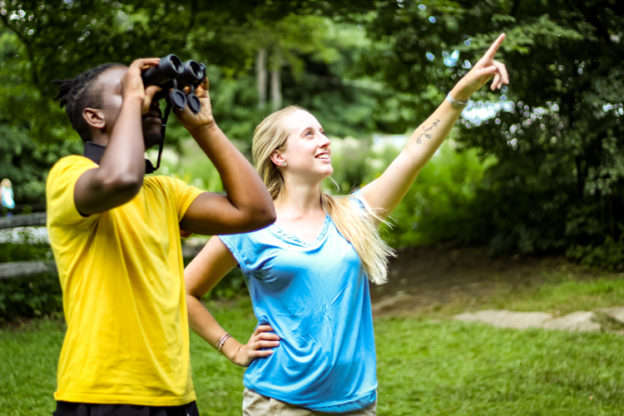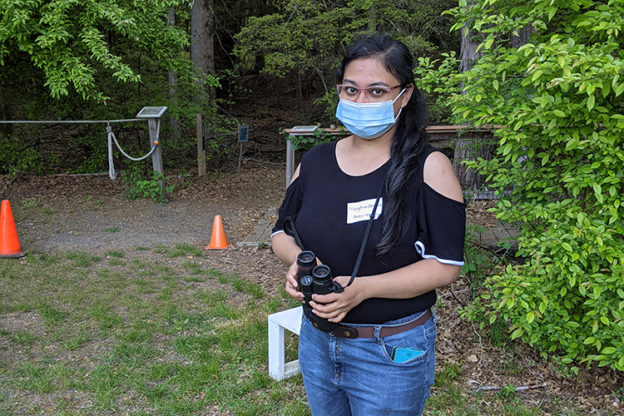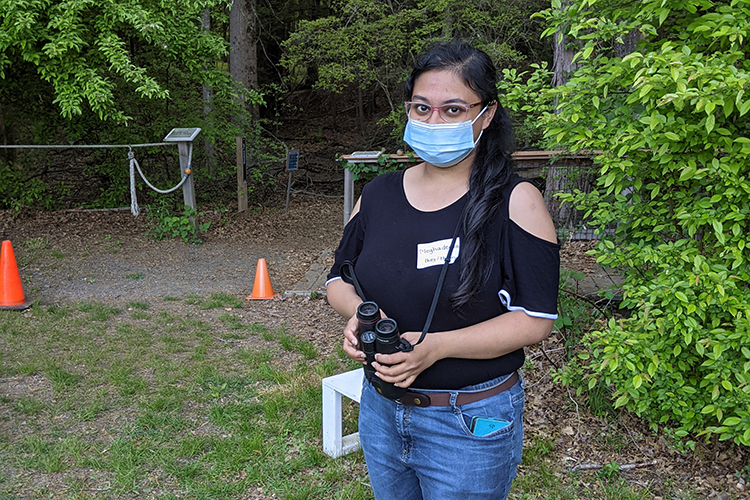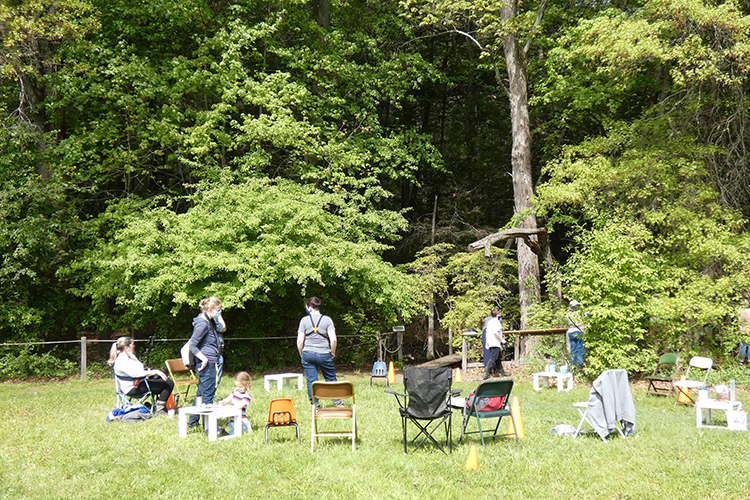Every May, around a thousand of people participate in Bird-a-thon. Last year, 13 teams recorded a combined total of 274 bird species in 24 hours, while raising over $310,000 to support Mass Audubon’s wildlife sanctuaries, conservation efforts, and education programs across the state.
Finding 274 different species of birds is quite an accomplishment, but if you’re new to birding, a competition may sound intimidating. Don’t worry! Bird-a-thon is actually a great way to learn and hone your birding skills. Whether you love exploring nature or just want a good reason to go outside, everyone is welcome to Bird-a-thon.
Read some tips and tricks to help you maximize your time birding.
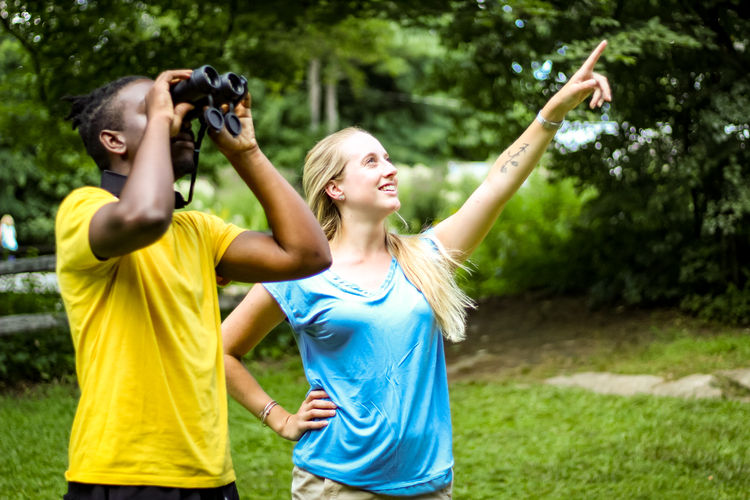
Tools and Resources for Bird Identification
Some birds are easy to identify, like the bright red Northern Cardinal or the unmistakable Blue Jay. But telling a Purple Finch and House Finch, or a Cooper’s Hawk from a Sharp-shinned Hawk, is a bit trickier.
Experienced birders suggest getting a book or field guide to learn the basic physical characteristics of different species. You can also download tools like the Merlin app from the Cornell Lab of Ornithology, where you can practice identifying birds based on their look and sound.
Look through our program catalog to find an online and in-person class or event where you can build your birding foundation. Options range from joining staff on a morning walk as they teach you how to identify different species, to taking birdwatching basics class.
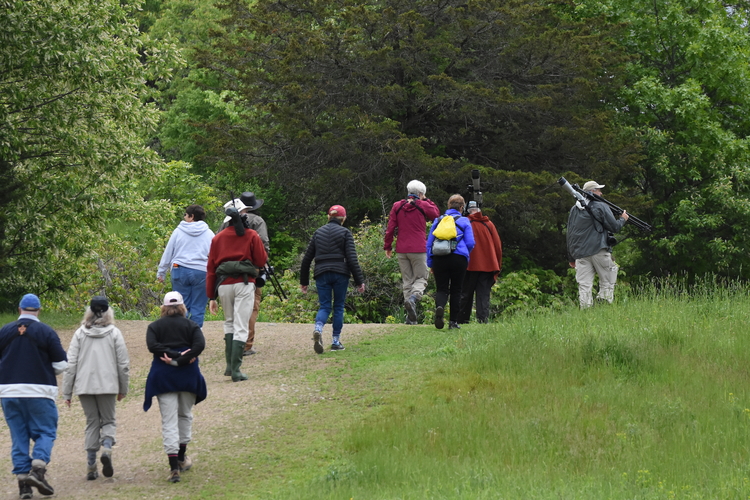
Birding Hotspots in Massachusetts
When you’re ready to put your new skills to the test, start going to birding hotspots, or places that can be “bird magnets”. There are many places across Massachusetts where you can practice your birding, including any Mass Audubon wildlife sanctuary. Over a dozen of our sanctuaries have a bird checklist for you to keep track of what you see. Here are just a sample of our hotspots:
- The swamps, thickets, and woodlands of Marblehead Neck Wildlife Sanctuary in Marblehead are great spots to find spring migratory birds, especially warblers. Rocks jutting from the ground on Warbler Trail offer a higher observation point to look for birds in the trees below or the sky above.
- In the dead trees surrounding the secluded pond at Waseeka Wildlife Sanctuary in Hopkinton, you can find woodland birds and waterbirds like Pileated Woodpeckers, Great Blue Herons, Ospreys, and an occasional Great Horned Owls. You may also spot some Wood Ducks and Hooded Mergansers nesting in the duck boxes installed near the pond.
- The Berkshires is an ideal location for both beginner and experienced birders. At Pleasant Valley Wildlife Sanctuary in Lenox, you can join a program with a skilled guide or bird on your own as you look for species like Eastern Bluebirds, Yellow Warblers, and Cedar Waxwings.
- Along the salt marshes and woodlands in the Barnstable Great Marsh Wildlife Sanctuary in Barnstable, you may see birds like the Northern Harrier, Saltmarsh Sparrow, and Willet. The sanctuary is also a great place to see scenic views of the barrier beach habitat.
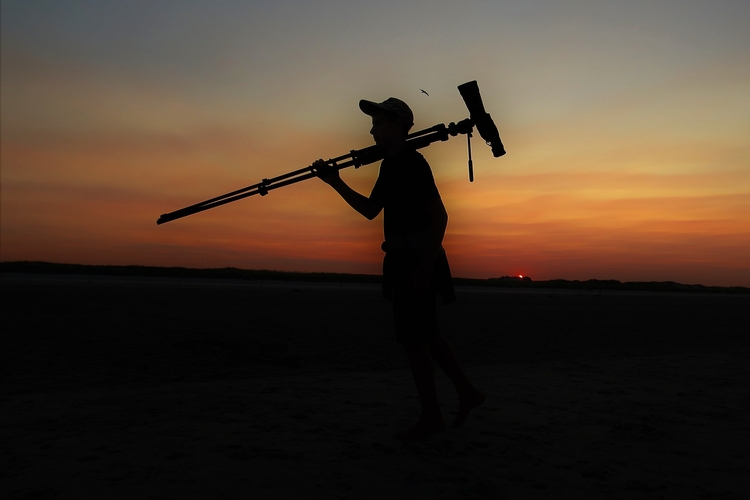
When to go Birding
Just as the early bird gets the worm, an early birder sees the bird. Bird-a-thon pros know that dawn and dusk are the best times to look for a majority of birds. Many species take advantage of the insects and small creatures crawling around before the sun sends them back to tunnels and holes in the ground.
For some species, you’ll have a better time finding them after sunset. At dusk, listen for the courting whistles from the American Woodcock or the loud ‘wok’ sounds of the Black-crowned Night-Heron. If you want to hear the haunting calls of a Barred Owl or Eastern Screech Owl, you will have to stay up late or wake up early to hear these night predators.
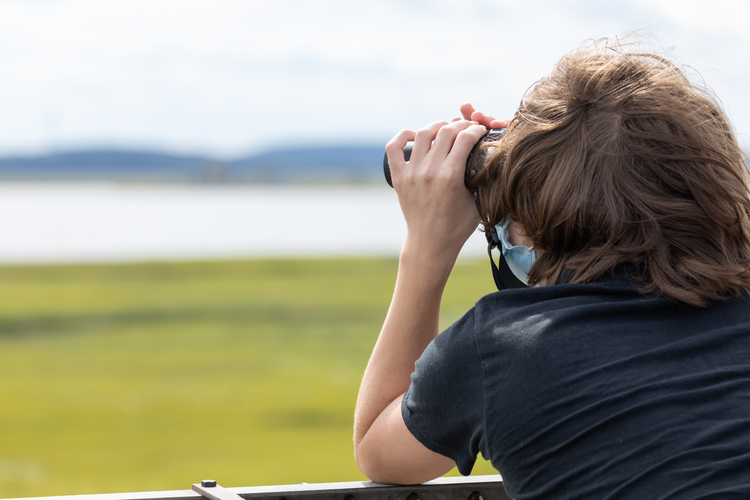
How do you Bird-a-thon?
While birding for Bird-a-thon can be highly competitive, it’s also a great way to get outdoors and learn about wildlife while raising money to support Mass Audubon’s conservation initiatives.
From admiring them in your backyard to exploring new landscapes, there is no one way to be part of this annual tradition. Visit the Bird-a-thon website to join a team and make an impact.


